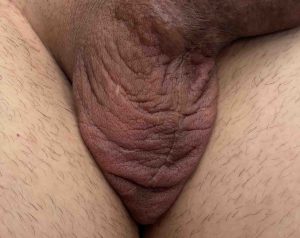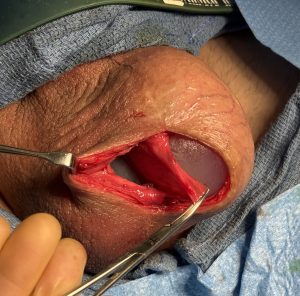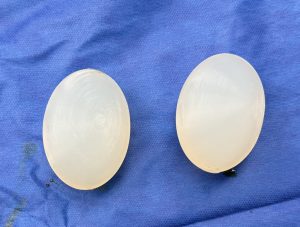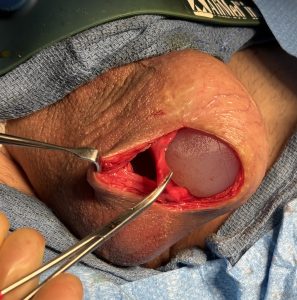Background: The scrotum is thin external sac that is composed of skin and muscle. (aka a fibromuscular cutaneous sac) It has two testicles that have separate compartments divided by a septum of tissue. This septum is more robust than most realize usually being 5 to 6mms thick. These two compartments are evidenced externally by the visible midline raphe seen down the midline of the scrotum. This raphe connects to the septum underneath it.
When replacing the testicles with implants it is important to try and keep the two compartment scrotal concept, particularly in bilateral replacements. With loss of one testicle an implant will develop encapsulation and by this natural process will develop its own compartment. But with the loss of both testicles and subsequent implant replacements one large mega compartment will develop if the implants touch during placement. Despite having two implants two separate compartments will not develop. Rather one single compartment with two implants moving around inside can lead to chronic seromas. (fluid collections)
The need for bilateral testicle implants is not uncommon in side by side testicular enhancements. Even with the existing testicles in place it is usually very possible to keep a tissue septum between the two implants. The more challenging but far less common situation is when the scrotum is devoid of natural testicles or implants, the so called empty scrotal sac. (ESS) The only time I have seen ESS is when both testicles have been removed and replaced with implants…which were then lost due to infection.




Key Points:
1) The empty scrotum can occur from testicle removals or loss of testicular implant replacements.
2) The empty scrotum because of its origin will have considerable scar tissue that can limit how much new implant expansion can be done.
3) In bilateral testicle implant placements effort should be made to keep a soft tissue partition between the two implants.
Dr. Barry Eppley
World-Renowned Plastic Surgeon



